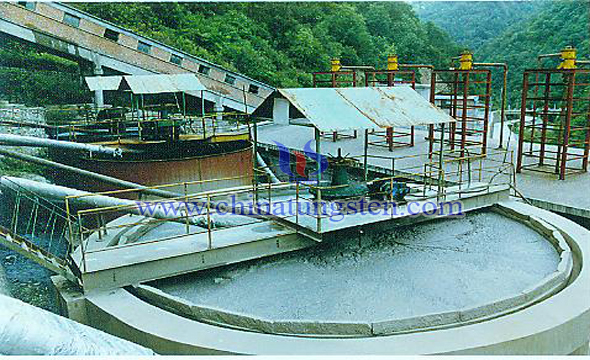Another Point to Break the Separation Problem of Tungsten and Molybdenum
- Details
- Category: Tungsten Information
- Published on Monday, 05 February 2018 14:05
With the development and utilization of high quality tungsten and molybdenum resources, existing tungsten and molybdenum resources increasingly complex composition, tungsten and molybdenum symbiotic ore is become more and more. Especially in recent years with the increasing value of tungsten and molybdenum. The recovery of molybdenum or tungsten in tungsten resources is becoming more and more important.

Recently, some scholars have proposed a method of producing tungsten and molybdenum products without strictly separating the tungsten and molybdenum symbiosis mixed ore, the idea is that when developing and utilizing the mixed molybdenum and tungsten molybdenum ore, it should be flexibly segmented in the market principle, from the environmental protection and energy saving point of view, in order to achieve maximum efficiency for the purpose, do not take the long process, high cost tungsten and molybdenum separation, but according to the needs of different users to produce marketing on the road of tungsten molybdenum iron, tungsten molybdic acid ammonium products.
The main process includes the following:
1. The tungsten-molybdenum symbiotic mixed ore and water are mixed according to a solid-liquid volume ratio of 1: 3, and then an anionic surfactant is added in an amount of 1% by weight of the mixed molybdenum-tungsten ore;
2. The ball mill with a vibrating ball mill for solid-liquid separation;
3. The filtered liquid into the wastewater treatment tank treatment, solid pumped into the slurry tank;
4. The symbiosis of solids and water mixed ore of tungsten and molybdenum by solid-liquid mixed volume ratio of 1: 3 ratio in slurry tank, adding sodium hydroxide leaching agent and oxidant A2O3 bauxite, adjusting the pH of 12.5, stirring into paste;
5. The slurry mixture is pumped into a high-pressure leaching kettle and warmed to 150 ° C-180 ° C. After the reaction, the mixture is filtered and washed with a belt filter. The filtrate is leached and diluted with water and adjusted to pH 2.5 with acid.
6. Adsorption of tungsten and molybdenum with weakly basic macroporous anion resin D314;
7. Analyze resin with 8% ammonia;
8. Adding magnesium chloride in the analytical solution to remove phosphorus, silicon and arsenic, and filtering to obtain a filtrate;
9. Add calcium chloride, precipitate into calcium tungsten molybdate, calcium tungsten molybdate calcined at 600 ℃ temperature to obtain molybdenum trioxide and tungsten trioxide, and then add ferrosilicon, steel and sodium nitrate, with the furnace method produced into tungsten molybdate, and finally broken into lumps, namely tungsten molybdenum iron products.
This method is less investment, low production cost, short process, high recovery rate and selective leaching of valuable elements of tungsten and molybdenum, less impurity leaching rate, environmental protection and energy saving, high leaching rate, and tungsten and tungsten molybdenum acid ammonium also has certain application market, it has a good application prospect.
- Tungsten Manufacturer & Supplier, Chinatungsten Online: www.chinatungsten.com
- Tungsten News & Prices of China Tungsten Industry Association: www.ctia.com.cn
- Molybdenum News & Price: news.molybdenum.com.cn
- Tel.: 86 592 5129696; Fax: 86 592 5129797; Email: sales@chinatungsten.com



 sales@chinatungsten.com
sales@chinatungsten.com